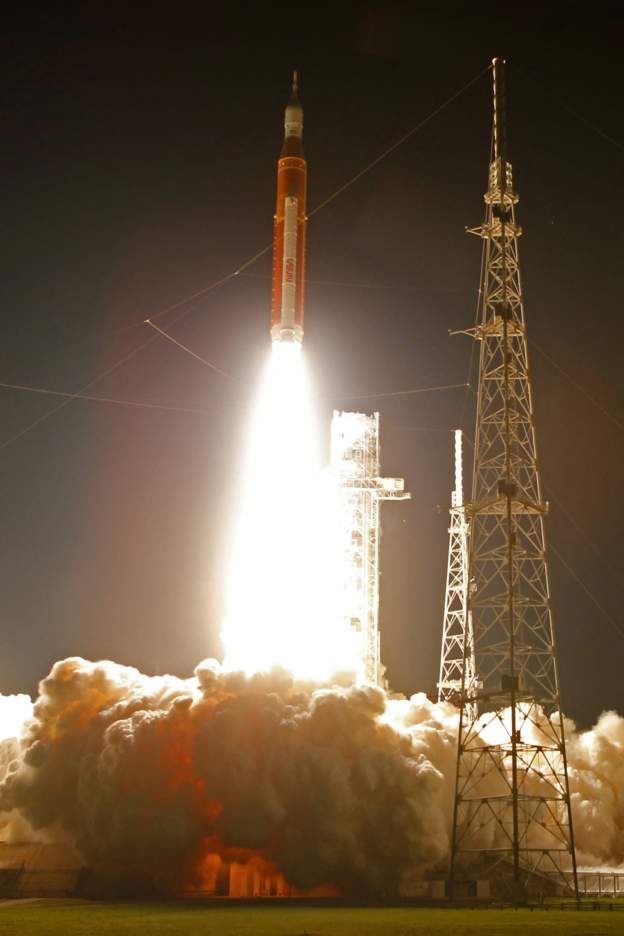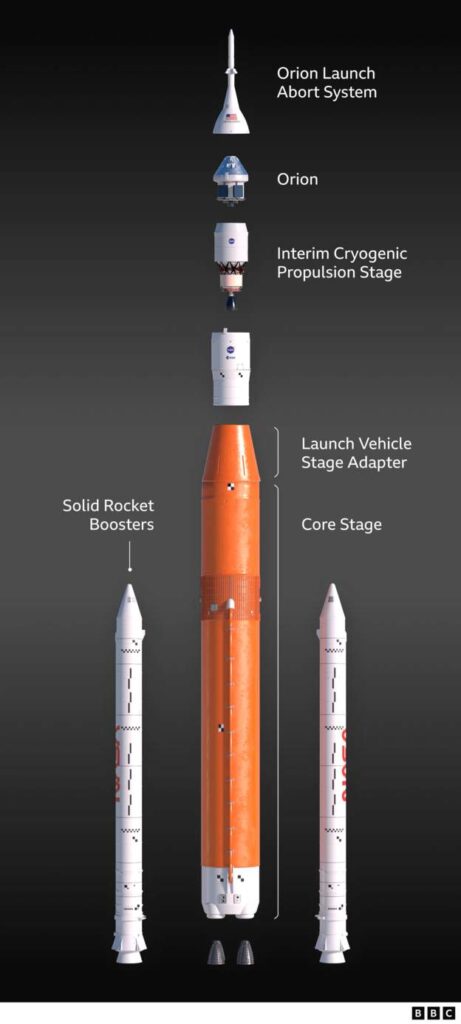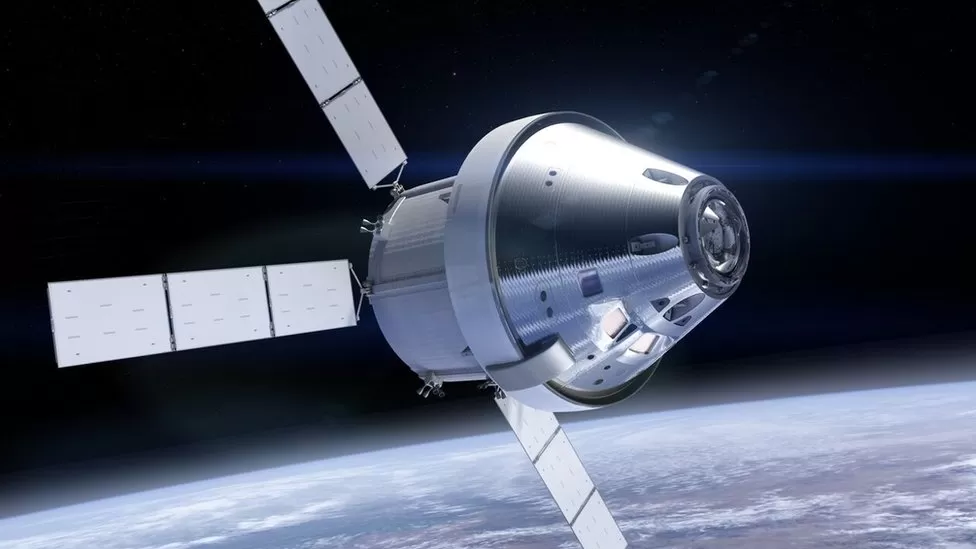24 November 2022
Fly me to the Moon … again
By Paul Branch

So where were you on 20 July 1969? Chances are you were one of over half a billion people glued to the television watching Neil Armstrong’s first faltering steps down onto the surface of the Moon, on the Sea of Tranquility, while his colleague Edwin “Buzz” Aldrin looked on enviously through the porthole of NASA’s Lunar Module. All this not long after those immortal words “Houston. Tranquility Base here. The Eagle has landed”. To which came the reply “Roger, Tranquility. We copy you. You got a bunch of guys down here about to turn blue”. Stirring, unforgettable grainy black-and-white pictures and crackly audio. And throughout the drama panning out on the surface, orbiting the Moon was the ultimate mini-cab driver, Michael Collins, in his Command Module, waiting patiently for his two passengers to join him for the lift back to planet Earth. I had occasion to have dinner with Buzz and his wife some years ago, and a more unassuming, laid back but highly professional gentleman you could not wish to meet. Being second to step onto the Moon rankled though, despite shrugging it off as just the luck of the draw.
The manned Apollo missions ended in 1972, closing the book on President John F Kennedy’s promise in 1961 to set foot on the Moon. Fifty years on and we have just witnessed the first launch of Artemis, NASA’s new manned space flight programme from the Kennedy Space Center in Florida, and its arrival back at the Moon. This venture was inaugurated by President George W Bush in 2006 with the objective of going back to the Moon by 2020, cancelled by Barack Obama in 2010 (been there, done that), and reconstituted the following year to appease those States in the US impacted by the loss of tens of thousands of jobs. But Artemis now has an expanded and more futuristic perspective: regain our access to the Moon, but as a stepping stone to further discoveries including exploring space’s holy grail of Mars. In the meantime there have been numerous space-borne excursions to the International Space Station, a mere one thousandth of the distance to the Moon, but technology has moved on considerably since Apollo, in terms of hardware capable of propelling useful payloads into space as well as withstanding the heart-stopping launch procedure and the harsh space environment. Computing software and processing capability have also come on a bit since the 1960s-era system that controlled the Eagle’s operations – today it would struggle to operate even a domestic Smart meter.

The $18 billion Artemis Space Launch System built by Boeing is a monster: nearly 100 metres high (taller than the Statue of Liberty), four engines at its base (ex-Space Shuttle Orbiter design) with liquid hydrogen and oxygen propellant plus two solid rocket boosters, all generating nearly 40 megaNewtons of thrust to escape the Earth’s gravitational force, 15% more powerful than the Saturn V rockets used in all 17 Apollo missions. The old Soviet Union did build something even bigger (45 megaN) in the 1960s in its bid to reach the Moon, but sadly all four test flights came to nought. The next planned version of Boeing’s SLS will probably match that for thrust, with an even more powerful Starship rocket at 64 megaN being developed by Elon Musk’s Space-X company. In Greek mythology, Artemis was the twin sister of Apollo but in space exploration terms the two are light years apart.
And while all the rumbling and thrusting of the SLS are going on down below, atop the SLS will sit up to four crew members in their cosy little Orion spacecraft, which will carry them all the way to the Moon and hopefully all the way back. The conical shape of the capsule is not dissimilar to the earlier Apollo modules, but that’s not a great surprise. The physics of re-entry remain the same after fifty years, and the shape is ideal for stability when travelling through our atmosphere at great speed.

Orion consists of several parts: an adapter to attach it to the SLS rocket; a service module which supplies air, water, electrical power and propulsion; the crew module for astronauts and cargo; and something NASA hopes will never be needed — a launch abort system to propel Orion and the crew away from the rocket if a launch emergency happens. Presumably this safety measure came about because of the fatal explosion in 1986 on the space shuttle Challenger, which broke up just over a minute into its flight, but accidents like that would seem pretty nigh impossible to protect against. Designing and building the various modules began in 2006, based on a light-weight but immensely strong honeycomb structure made of aluminium-lithium alloy. The crew module is enclosed under hear-resistant tiles with a metallic coating for protection from temperature extremes. At the base of the crew module is a huge heat shield for protection during re-entry. Controls and display console inside Orion owe much to their Space Shuttle heritage but with less hardware and more software functionality for increased reliability and less weight. Its computers are based on those built for commercial aircraft but ruggedized to withstand higher levels of vibration, G-forces and radiation. The service module built by the European Space Agency has four solar arrays which tilt and rotate to track the Sun while generating enough electricity to power a couple of 3-bedroom houses. There are three engines to propel and manoeuvre the crew module.
Assuming the first test flight goes well, next up will be a manned flight but the first planned mission to land on the Moon is Artemis-3, where Orion will dock in lunar orbit with a landing craft, currently expected to be part of the Starship launcher programme. Crew members will transfer from Orion to the lander, which then detaches so as to transport them down to the lunar surface, as well as returning them to Orion. Subsequent missions will involve both Orion and the lander docking with a small orbiting space station called Gateway which should be capable of supporting later, more complex missions. The return to Earth follows a well tried procedure: Orion separates from the service module, fires its thrusters to begin the voyage home, plunges back through the atmosphere at supersonic speeds up to 38,000 km/hour with temperatures of close to 3000C, and splashes down in the Pacific Ocean for retrieval by a waiting transport ship. The covering of the heat shield slowly burns off during re-entry in order to carry heat away from the crew capsule, and eleven Kevlar/nylon hybrid parachutes slow the vehicle down to 30 km/hour for a safe splashdown.
Artemis crew members are expected to live and work on the Moon for some considerable time on later missions. Part of the scientific rationale for the programme is to discover whether there is water at the Moon’s south pole, which could be converted into fuel for travel to more distant destinations including Mars. Water would also provide a source of oxygen necessary for human survival. This and the testing of the overall accommodation, transportation and communications systems would mean there is a sustainable base for future excursions. And as ever the engineering innovations coupled with scientific research and experimentation will yield new discoveries to improve our knowledge of space, as well as open up new applications for improving life on Earth. Compared to the eye-watering sums we’ve heard about being wasted at home, that sounds like $18 billion well spent.


